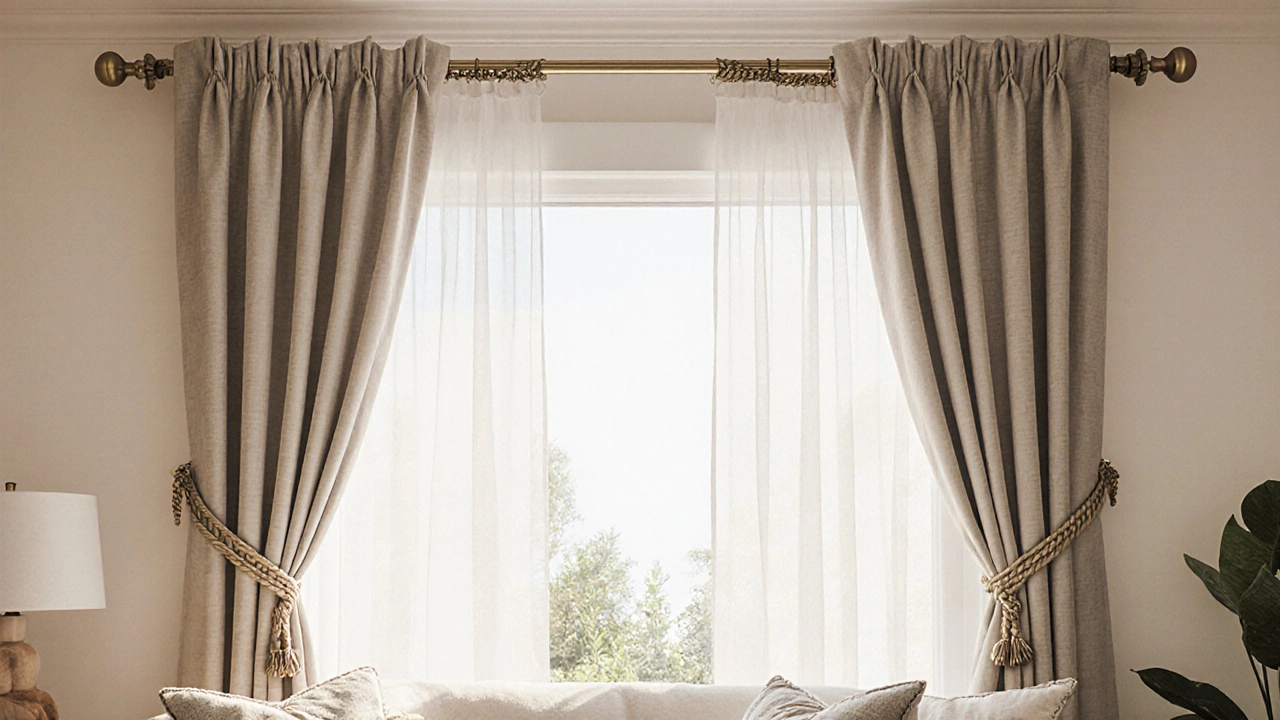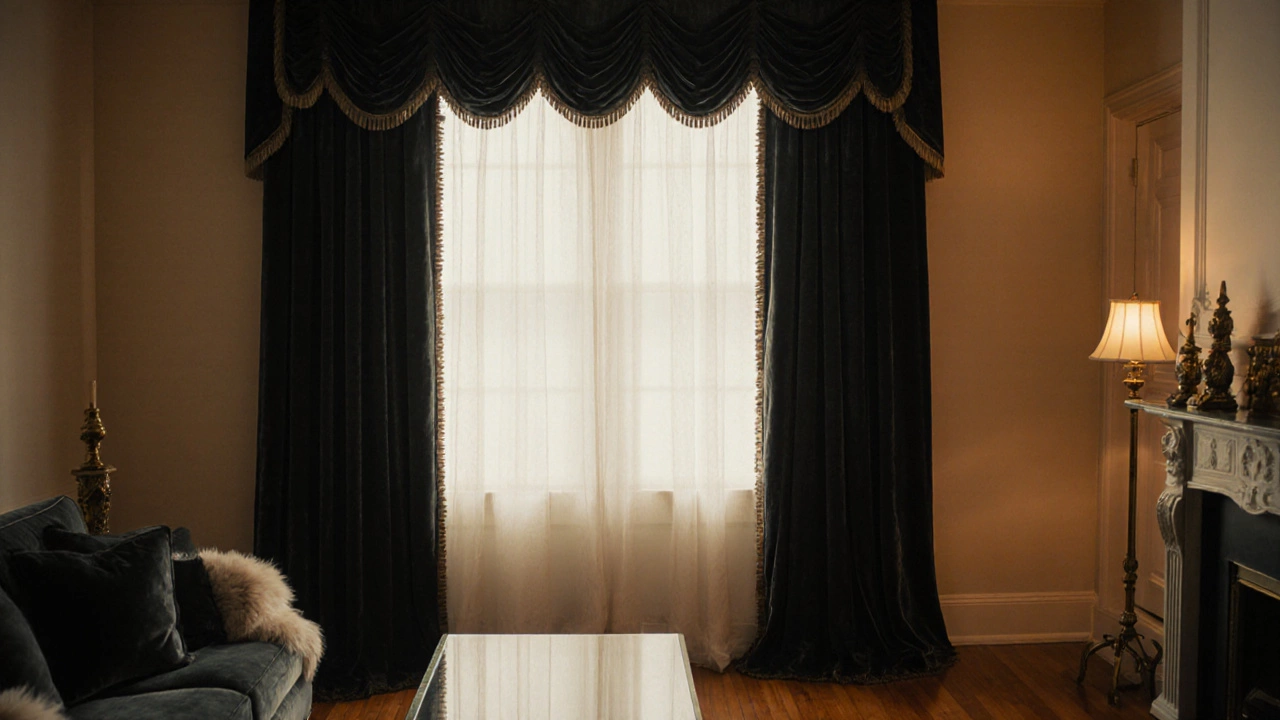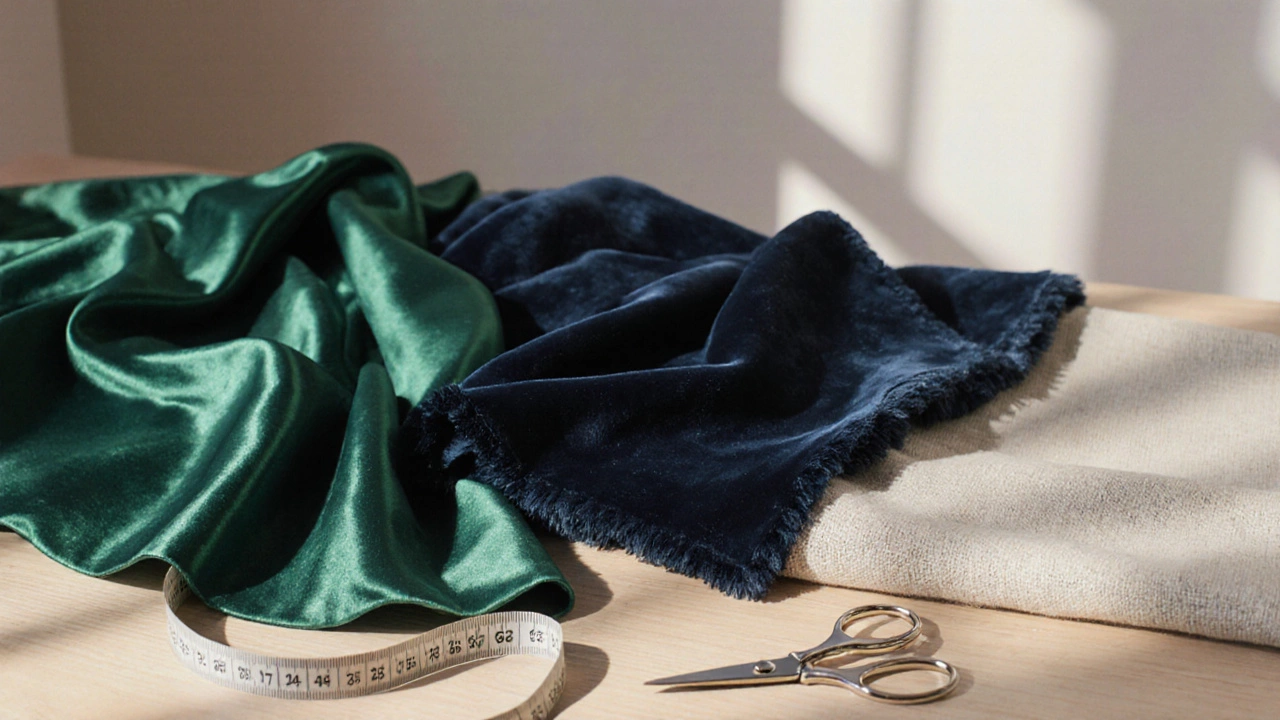Fabric Luxury Calculator
Silk
$30–$60/yd
LuxuryShiny, fluid drape
Velvet
$25–$55/yd
Mid-LuxuryRich, heavy, sound-absorbing
Linen
$15–$35/yd
BudgetNatural, slightly textured
Cotton-Silk Blend
$12–$25/yd
BudgetSoft sheen, decent drape
Ever stare at a room and feel like the curtains are the missing piece that could lift the whole look? You don’t need to splurge on designer drapes to get that high‑end vibe. With a few smart choices you can make curtains look expensive without blowing your budget. Below is a step‑by‑step guide that covers everything from fabric selection to finishing touches.
Choose the Right Fabric
Fabric is the foundation of any curtain’s perceived value. When you think about luxury, think about texture, drape, and how the material catches light.
Fabric is the material that forms the main body of a curtain, influencing its weight, translucency, and feel. High‑quality fabrics tend to have a natural sheen and a smooth hand.
- Silk is renowned for its lustrous finish and fluid drape. It instantly adds an air of elegance, especially in jewel tones.
- Velvet offers a plush, heavy feel that absorbs sound and creates a cozy, upscale ambiance.
- Linen provides a relaxed, natural look with subtle texture. When paired with crisp whites or muted earth tones, it feels sophisticated.
If the budget is tight, look for cotton‑silk blends or polyester mimics that replicate the sheen of silk at a fraction of the cost.
| Fabric | Typical Price per Yard (USD) | Look & Feel | Maintenance |
|---|---|---|---|
| Silk | $30-$60 | Shiny, fluid drape | Dry‑clean only |
| Velvet | $25-$55 | Rich, heavy, sound‑absorbing | Spot clean or professional clean |
| Linen | $15-$35 | Natural, slightly textured | Machine wash gentle |
| Cotton‑Silk Blend | $12-$25 | Soft sheen, decent drape | Machine wash cold |
Upgrade the Lining and Interlining
Even the fanciest fabric can look cheap if the back of the curtain is flimsy. Adding a quality lining not only improves opacity but also gives the curtain body.
Lining is a secondary layer stitched to the back of a curtain, often made from polyester, cotton, or blackout material. It adds weight, improves drape, and hides hardware.
- For a luxe feel, choose a double‑stitched silk lining or a smooth satin backing.
- Blackout linings add a rich, heavy look while also providing light control.
- Match the lining color to the curtain’s trim or use a contrasting hue for a designer touch.

Focus on Details: Pleats, Valances, and Tie‑backs
Small design elements can upgrade the whole appearance. Think of them as accessories for your windows.
Pleats are folds that add structure and visual interest. Pinch pleats, goblet pleats, and pencil pleats each convey a different vibe.
Valance is a short piece of fabric that sits at the top, covering the curtain rod and adding a finished look. A simple, tailored valance can mimic custom drapery at a low cost.
Tie‑back is a decorative strap that pulls curtains aside. Choose metallic or upholstered tie‑backs for a polished finish.
- Pinch pleats give a crisp, formal look-great for dining rooms.
- Gobbets add a soft, romantic feel-perfect for bedrooms.
- Coordinate valances and tie‑backs with other hardware finishes (brass, oil‑rubed bronze) for a cohesive look.
Invest in Quality Hardware
Even the finest fabric can look cheap if it’s hanging from a cheap metal rod. Choose hardware that complements the curtain style.
Curtain Rod is the structural bar that supports the curtain. A sturdy, stylish rod can become a focal point.
Drapery Hardware includes brackets, finials, rings, and clips that attach the curtain to the rod. Materials like brushed brass, polished nickel, or matte black add a designer edge.
- Round rods with minimal finials work well with modern, sleek fabrics like linen.
- Ornate, tapered rods look luxurious with heavy velvet or silk.
- Opt for wall‑mounted brackets that sit flush to the wall; they hide unsightly hardware.
Perfect the Finish: Hemming and Tailoring
Professional‑looking hems make a massive difference. A sloppy stitch screams “budget” while a clean, crisp hem whispers “custom”.
Tailoring in curtain making refers to precise cutting, stitching, and finishing to achieve the desired length, width, and style.
- Use a double‑fold hem for a polished appearance; the extra fold hides raw edges.
- Consider adding a weighted bottom (sewing in a thin chain) to help the curtain fall straighter.
- If you lack sewing skills, many fabric stores offer affordable hemming services.

Color and Texture Tricks
Color can instantly upscale a room. Deep, saturated hues or muted neutrals both convey luxury when paired correctly.
- Rich navy, emerald, or charcoal can mimic the depth of silk without the price tag.
- Layer a sheer, light‑colored curtain behind a heavier, darker one for a dimensional look.
- Mix textures-pair a smooth satin valance with a rough‑hewn linen curtain for visual contrast.
Budget Hacks That Add Luxury
Here are quick wins that cost little but give big impact.
- Swap cheap plastic finials for metal ones you can find at hardware stores.
- Attach a decorative rope or braid to the curtain header for a boho‑chic upgrade.
- Use adhesive Velcro strips to create removable tie‑backs, letting you change the look seasonally.
- Iron or steam your curtains before hanging; even a modest fabric looks fresher when crisp.
- Add a thin strip of velour or faux fur along the bottom for a subtle plush accent.
Frequently Asked Questions
Can I make cheap curtains look expensive without replacing them?
Yes. Adding a quality lining, updating the hardware, and refining the hem are inexpensive ways to elevate existing curtains. Even a small change like new tie‑backs can make a big visual difference.
What fabric gives the most luxurious look for the lowest price?
A cotton‑silk blend or a polyester that mimics silk’s sheen offers a high‑end look without the silk price tag. Pair it with a satin backing for extra depth.
How do I hide cheap curtain rods?
Install wall‑mounted brackets that sit flush behind the wall and use a decorative valance to cover the rod. Choosing a rod with a sleek finish (brushed brass or matte black) also minimizes the cheap feel.
Is it worth investing in custom pleats?
Custom pleats add structure and a designer vibe. If the budget allows, opt for pinching pleats in a formal space; otherwise, fabric‑weight drapes without pleats can still look refined.
What maintenance does velvet require?
Spot‑clean velvet with a gentle fabric cleaner and avoid heavy agitation. For deep cleaning, a professional upholstery service works best.
